If you suffer from sore, painful calves, here are the best stretches to help you release built up tightness.
The calf muscles are an essential part of our mobility as humans. This often-overlooked muscle group makes up the entire backside of your lower leg and includes the lateral and medial heads of the Gastrocnemius, the Soleus, and the Plantaris. (1)
Calf pain can range from mild to severe and from dull to sharp, and there are a few different reasons for this.
Common Causes of Calf Pain
1. Strain
If you find yourself with sudden pain in your calf during physical activity, you most likely have a strain. This is the most common injury seen in primary care and sports medicine clinics and it occurs when a muscle is stretched beyond its ability to withstand tension. (2) This can result in small micro-tears in the muscle fibers (a Grade 1 strain), a moderate strain (Grade 2) or a severe calf strain with a complete tear or rupture of the muscle fibers (Grade 3). A Grade 1 strain can take two weeks of recovery time, while Grade 2 can take 5-8 weeks, and Grade 3 can take 3-4 months.
Suffering from a sore neck, back and shoulders? Get our mobility guide to ease pain and soreness.
Get The FREE Mobility Guide To Fix Your Pain Today!
2. Muscle Cramps
Another common cause of calf pain is muscle cramps. These can occur for a multitude of reasons including calf tightness, trigger points, or dehydration.
3. Rupture of the Achilles Tendon
The Achilles tendon connects the calf muscles and the heel. If this tendon ruptures, it can cause pain in the back of the heel and up through the calf.
4. Baker’s Cyst
This is a collection of knee-joint fluid that has pooled in the back of the knee. If this cyst ruptures, it can cause fluid to accumulate in the calf, causing pain and discomfort.
5. Sciatica
controls the muscles in the lower leg and back of the knee. When compressed, it can cause pain, numbness, and tingling that starts in the lower back and can stretch down the leg to the calf.
6. Blood Clot
In more severe cases, calf pain can be the result of a blood clot. Deep Vein Thrombosis (DVT) is the result of a blood clot that can form deep in the vein of the arm or leg, causing a blockage in circulation. This can cause swelling and pain in the calf and tends to occur after injury or surgical procedures. Without treatment, a clot can travel to the lungs, causing difficulty breathing and in extreme cases, be fatal. (3)
Note: If you are unsure of what could be causing your calf pain, it is important to check in with your doctor before beginning any at-home treatments.
The P.R.I.C.E Method
The P.R.I.C.E method is an effective tool that is used for treating mild strains, tightness, and acute injuries. Follow this method at home for two to three days after the initial injury before attempting any calf pain exercises.
- Protection – Protect the affected area from further injury.
- Rest – Avoid exercise and reduce your daily physical activity. Use crutches to keep weight off your injured leg.
- Ice – Apply an ice pack to the affected area for 15-20 minutes every two-three hours. Make sure to wrap the ice pack in a towel to avoid causing an ice burn.
- Compression – Use elastic compression bandages like an ACE bandage throughout the day to limit swelling.
- Elevation – Keep your leg elevated above the level of your head as often as possible to reduce swelling.
When the short-term pain of the injury is gone, you can start stretching to begin a full recovery.
8 Stretches To Release Calf Pain
Regardless of the cause of your calf tightness, use these nine exercises every day to release built up tension. We recommend that you warm up first with a short, five-minute walk to increase blood flow and prepare the muscles for stretching. You will need a foam yoga block and an exercise mat for this routine.
Wall Stretch | 30 sec per side
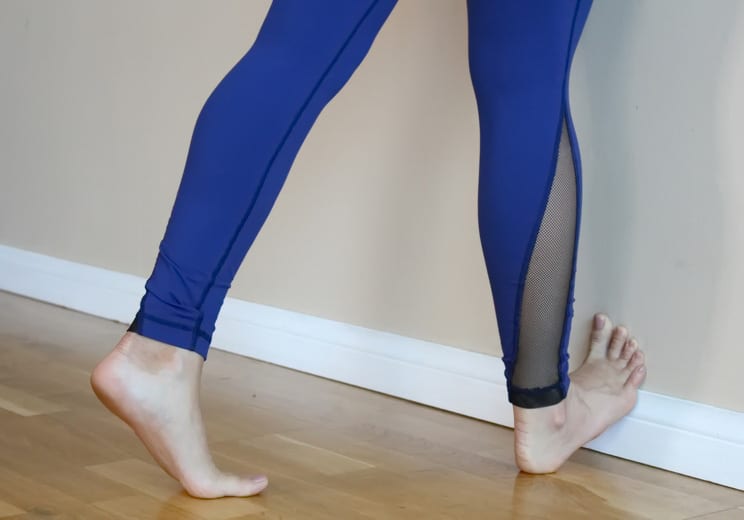
- Stand in front of a wall.
- Place both hands on the wall and then step the ball of your right foot forward and onto the base of the wall, keeping your heel on the ground.
- Keep a small bend in your right knee and lean your hips forward, feeling a stretch through your right calf.
- Hold for 20-30 seconds, then release and switch sides.
Seated Calf Stretch | 30 sec
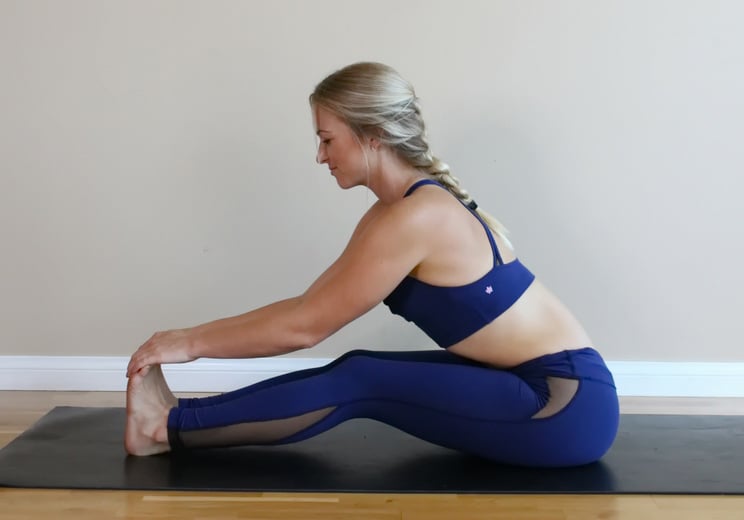
- Start sitting on the floor with your legs straight out in front of you and your feet flexed.
- Reach forward and grab onto the tops of your feet, bending your knees as much as you need to.
- Gently pull back on your toes to feel a stretch through both calves and hamstrings. Hold for 30 seconds.
Bent Calf Stretch | 30 sec per side
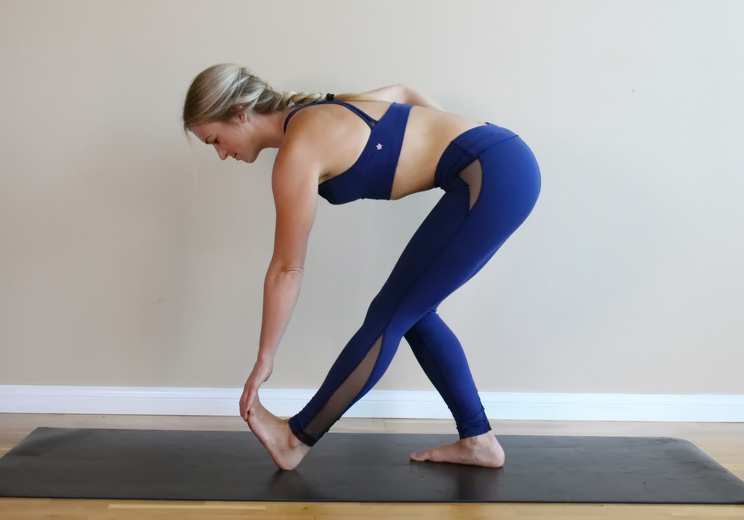
- Start standing up. Bend your left knee and straighten your right leg out in front of you, flexing the toes back towards the shin.
- Place your hands on your hips and keep a straight back as you fold from your hips. Then place your left hand on top of your right foot.
- Gently pull back on the right toes to feel a stretch through the back of your right leg. Hold for 20-30 seconds, then stand up and switch legs.
Heel Drop Calf Stretch | 30 sec per side
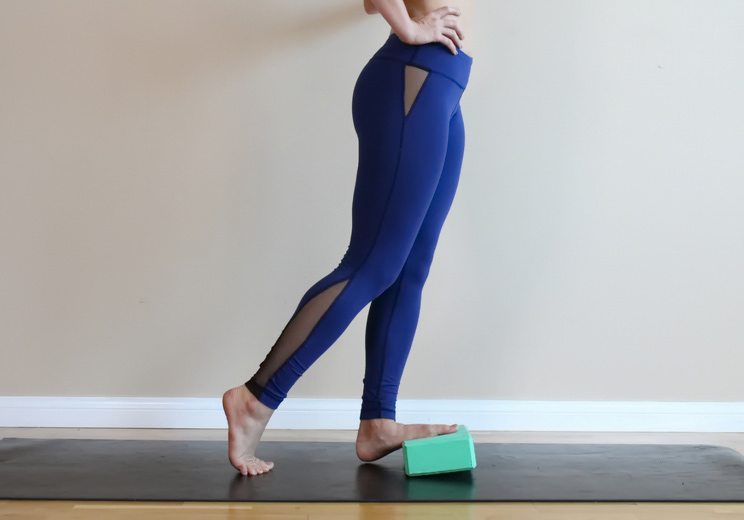
- Place a foam yoga block on the ground and step your right foot on top of it so that your heel hangs off the edge.
- Shift your weight onto your right foot and then lower the heel towards the ground until you feel a comfortable stretch through your calf.
- Hold for 20-30 seconds, then lift your heel back up as high as you can, flexing the calf muscles.
- Repeat on the left foot.
Tibialis Anterior Stretch | 30 sec per side
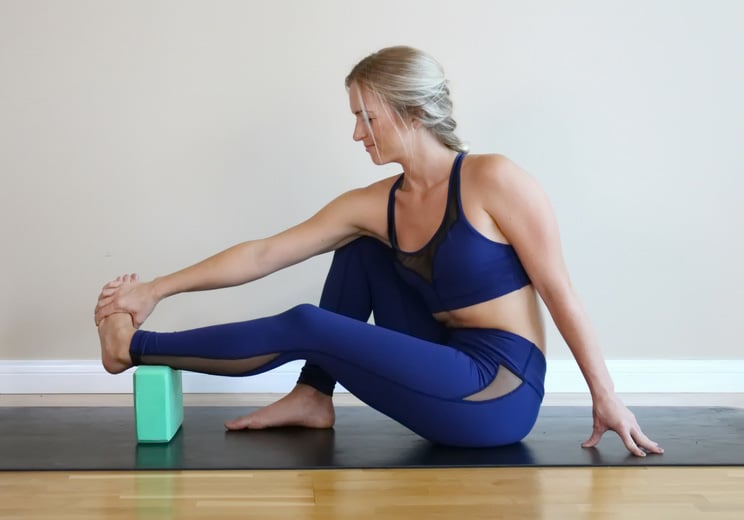
- Start seated on the ground with a block on the floor in front of you on the medium height.
- Place your left foot flat on the ground in front of you and extend your right leg, propping it up on the block so that it rests underneath your right calf.
- Slightly rotate your right foot inward. Then, reach forward with your left hand and apply slight pressure until you feel a stretch through the outside of your shin bone.
- Hold for 20-30 seconds, then switch legs.
Child’s Pose with Calf Release | 30 sec per side
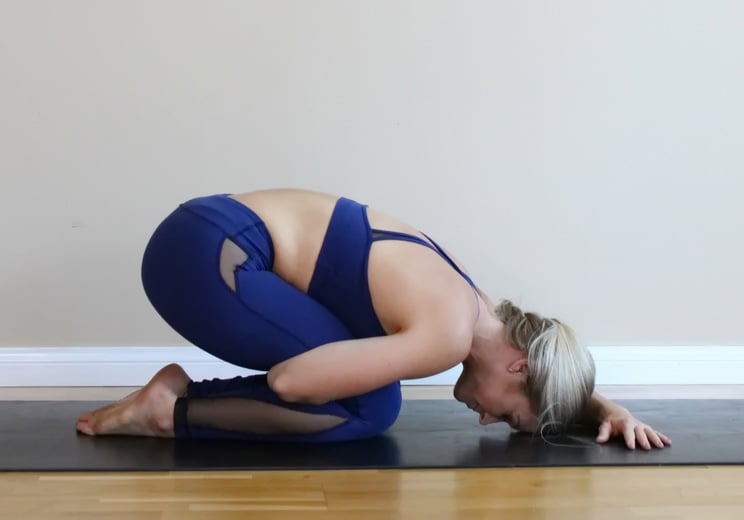
- Start in a tabletop position on your hands and knees. Bring your legs all the way together.
- Wrap your right arm around the back of your right thigh, then lower your hips to your heels so that you are compressing your right forearm with your thighs.
- Lower your head to the ground or rest your forehead on the back of your left forearm. If you don’t feel your right forearm pressing into your right calf muscles, adjust your arm.
- Hold for 30 seconds, then switch arms.
Lunging Calf Stretch | 30 sec per side
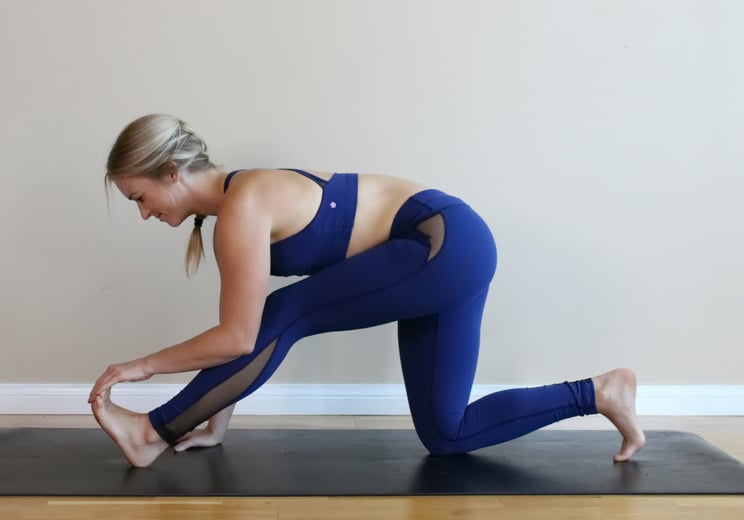
- Begin in a low lunge position with your right leg forward and your left knee on the ground with your toes tucked under. Your hands should frame your right foot.
- Slowly straighten out your right leg to feel a stretch through your hamstrings. Keep a small bend in the knee to avoid straining your lower back. Flex the toes back towards your shin.
- Place your hand on the top of your toes and gently pull back to feel a stretch through the calf.
- Hold for 30 seconds, then switch sides.
Downward Dog Calf Stretch | 30 sec per side
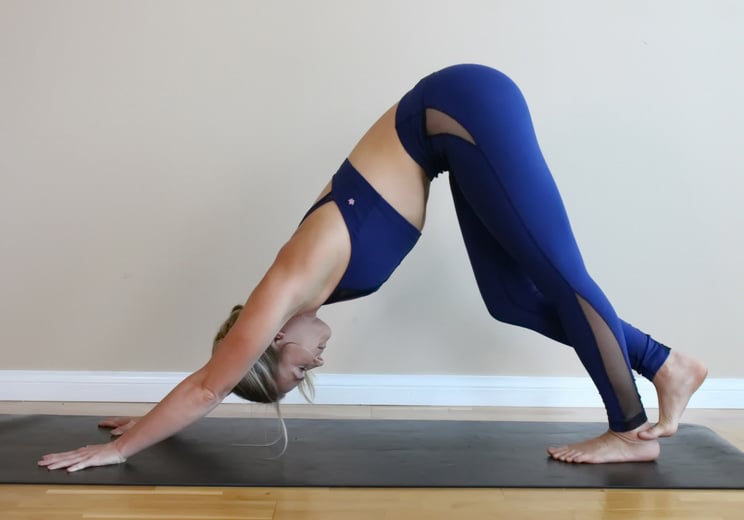
- Start in a push-up position with your shoulders stacked over your wrists.
- On an exhale, lift your hips up towards the sky, making a V-shape with your body and coming into a downward facing dog.
- Keep your weight evenly distributed in both hands as you pick up your left foot and place your left toes on the back of your right ankle, applying some gentle pressure. You should feel a stretch through your right calf and Achilles.
- Hold for 20-30 seconds, then switch sides.
BONUS:
Block Massage | 60 sec per side
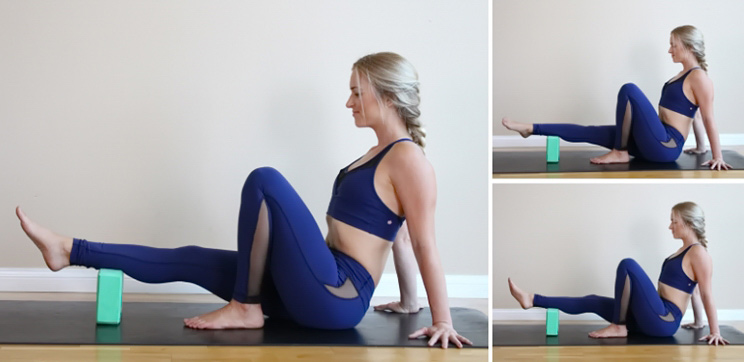
- Start in a seat with a block on the floor in front of you on the medium height.
- Place your left foot flat on the ground in front of you and extend your right leg, propping it up on the block so that it rests underneath your right calf.
- Slowly rock your right leg side to side, massaging your calf on the block. Whenever you feel a tight spot, stop and hold for 20-30 seconds.
- Switch sides.
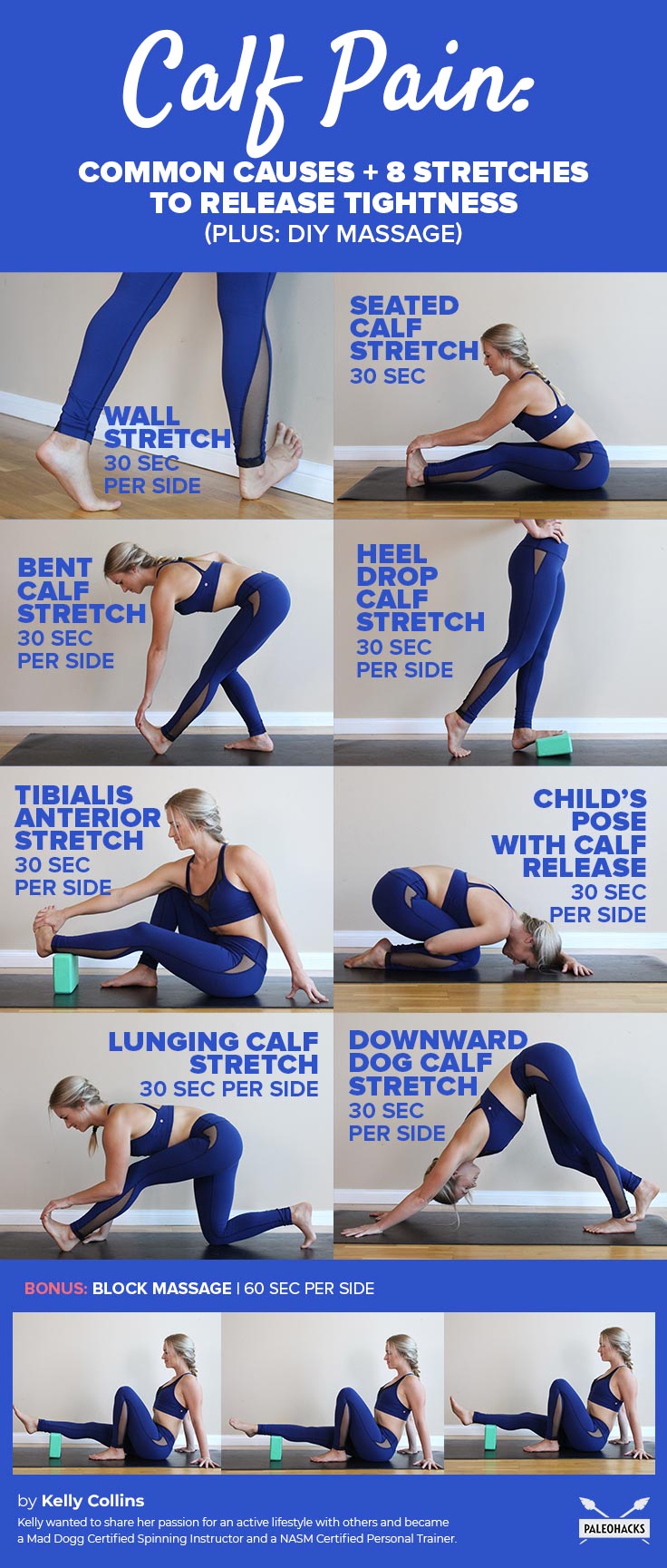


 MTHFR Mutation: What It Is and 4 Natural Ways to Alleviate Symptoms
MTHFR Mutation: What It Is and 4 Natural Ways to Alleviate Symptoms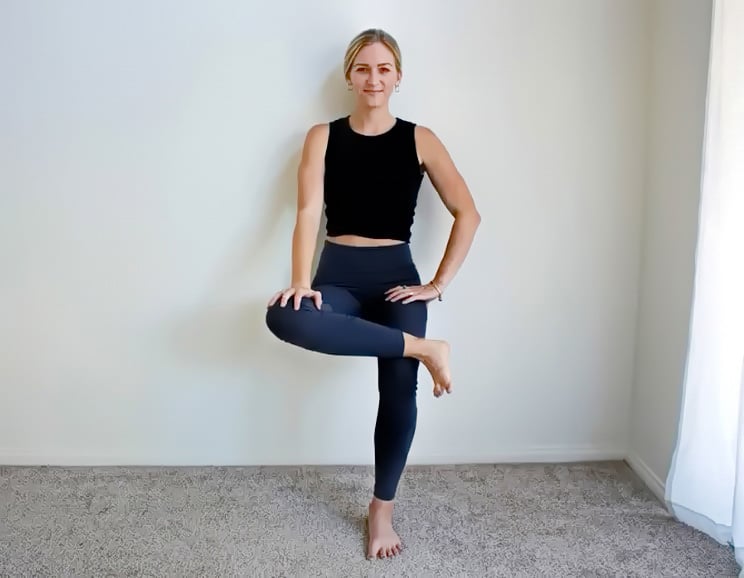
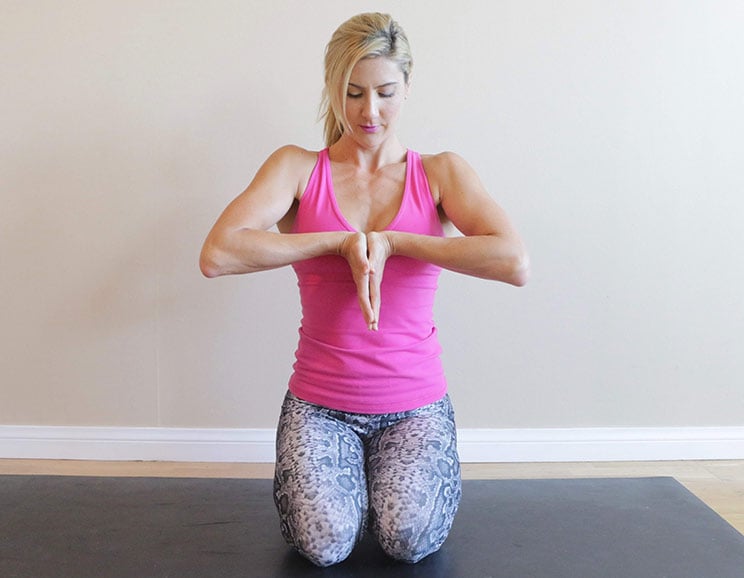
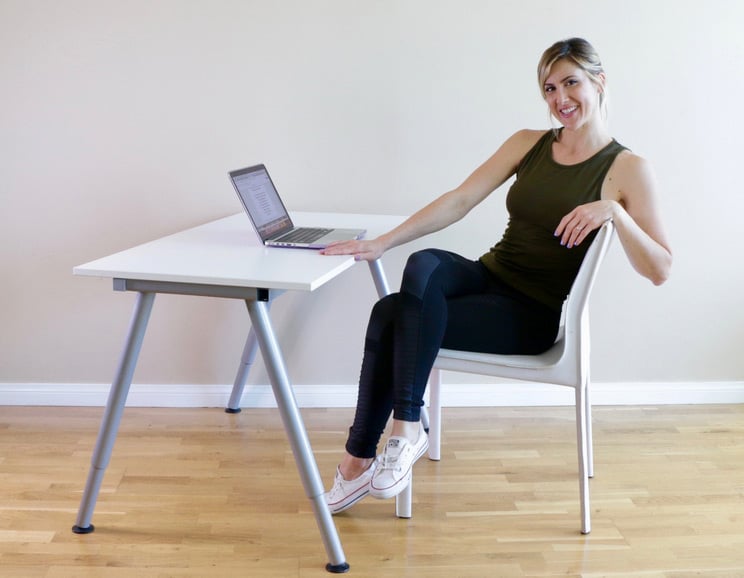
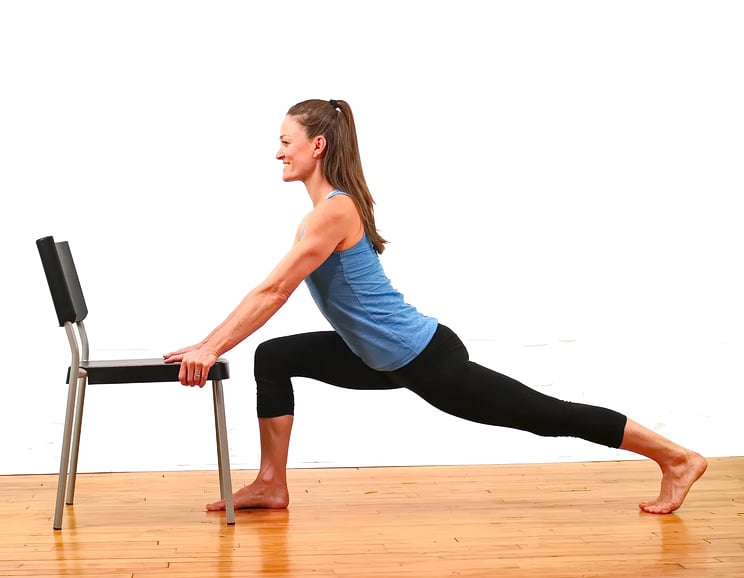
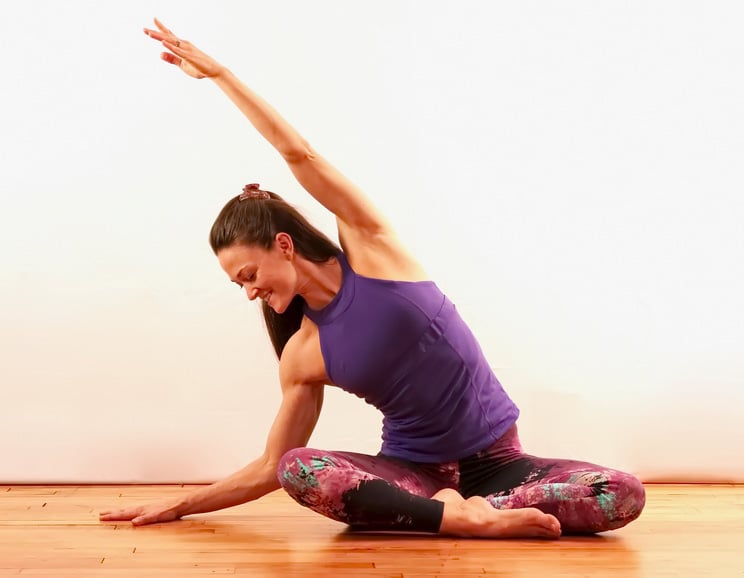
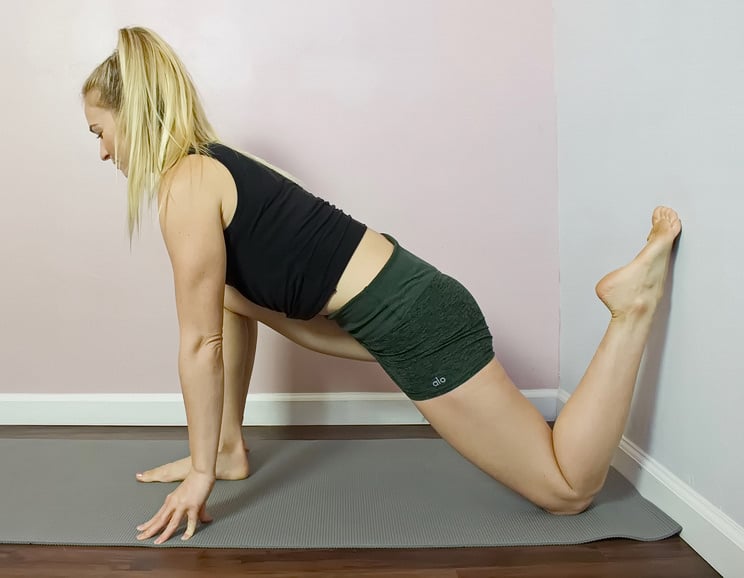
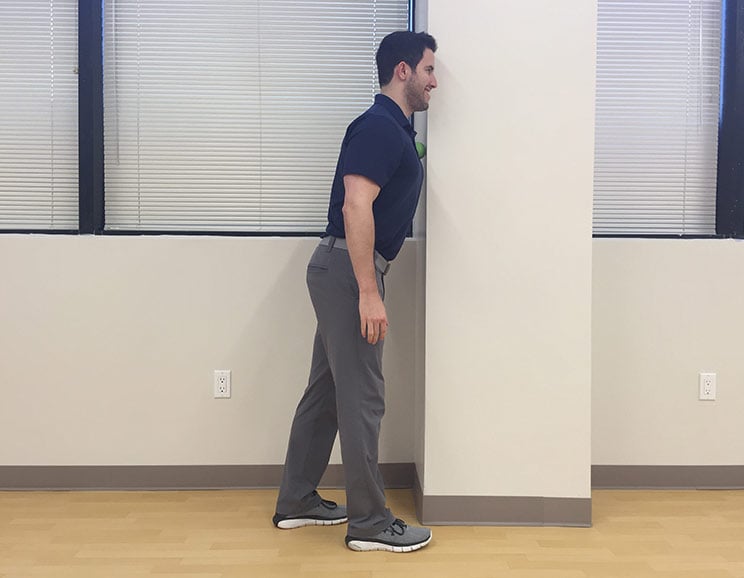
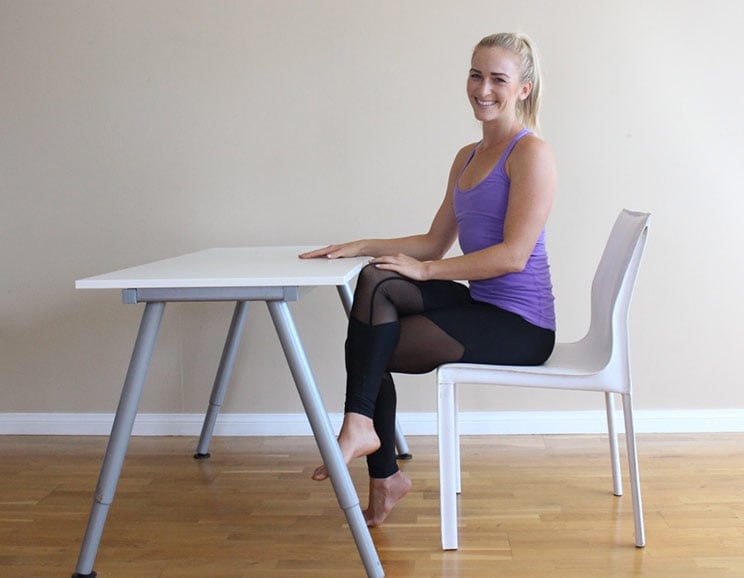
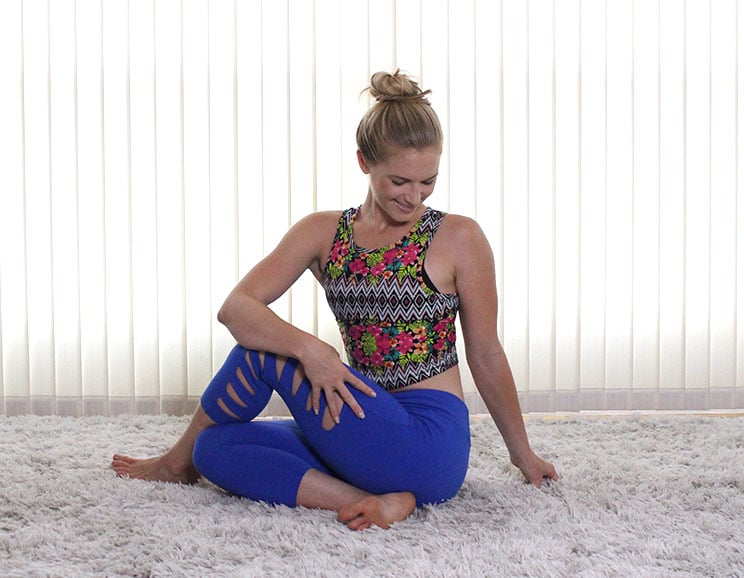
Show Comments